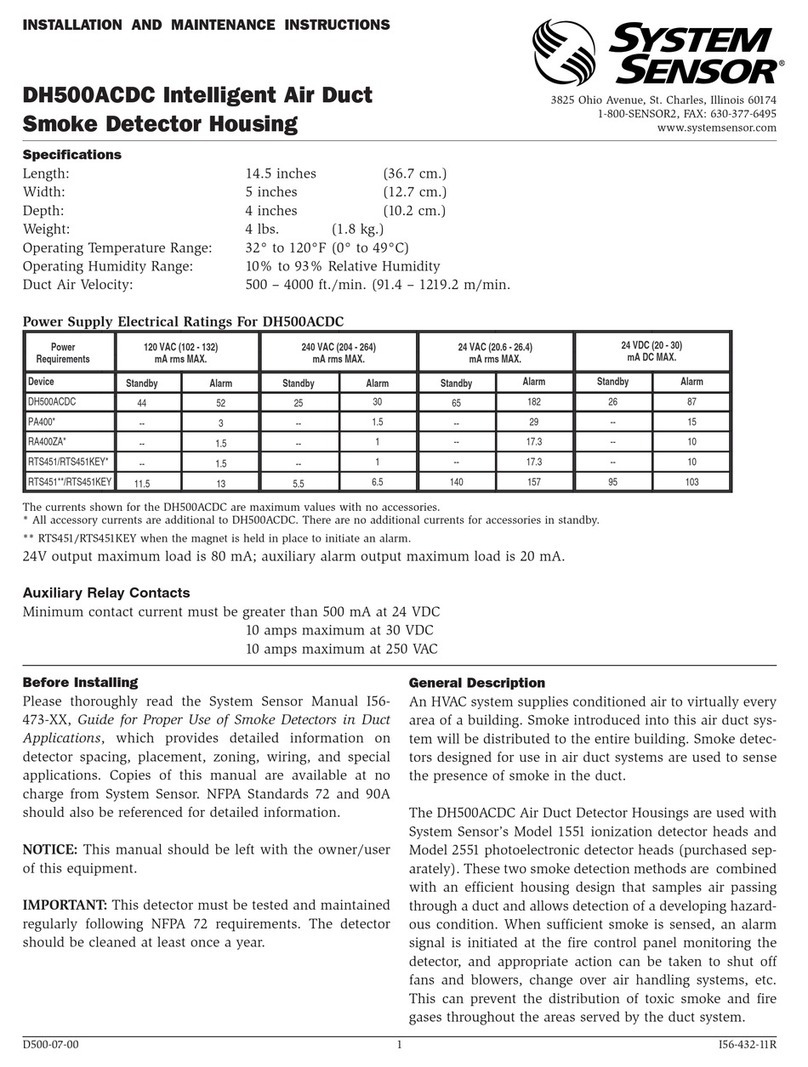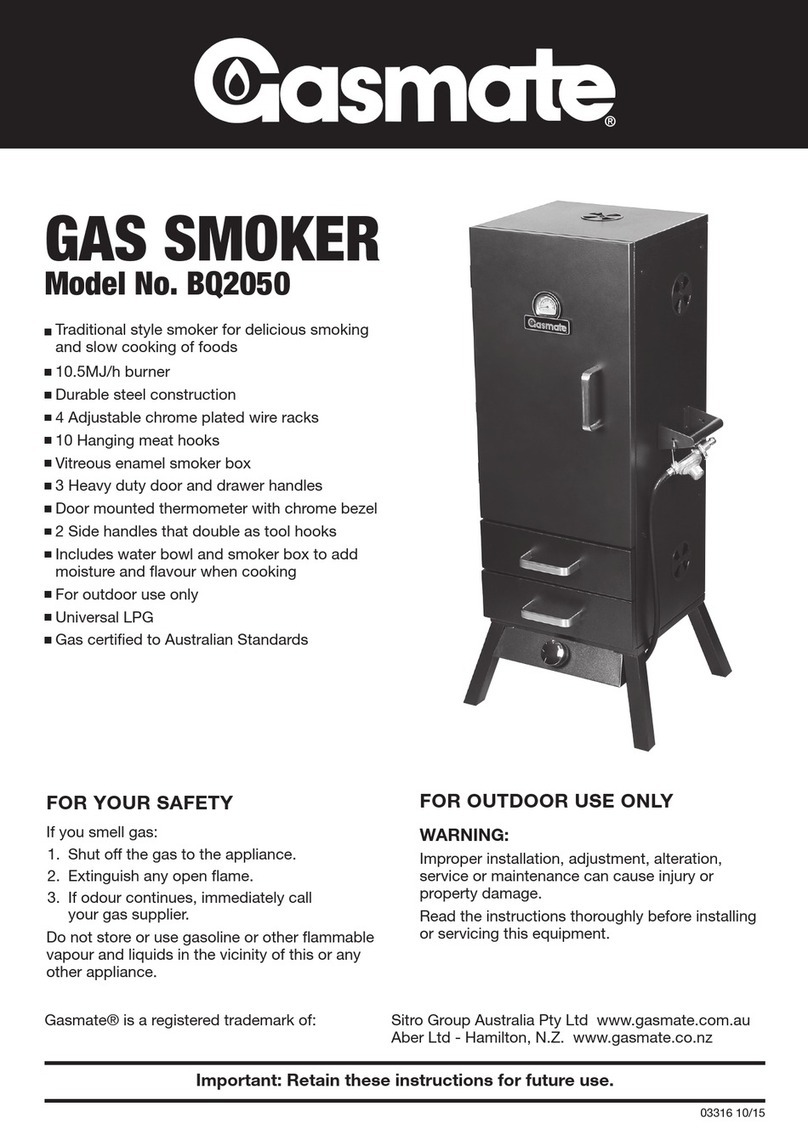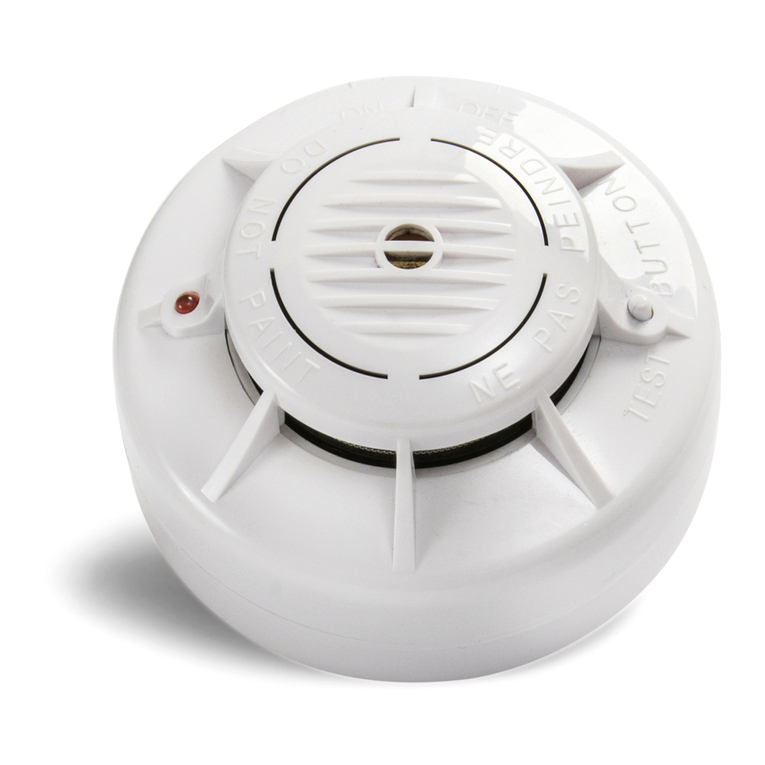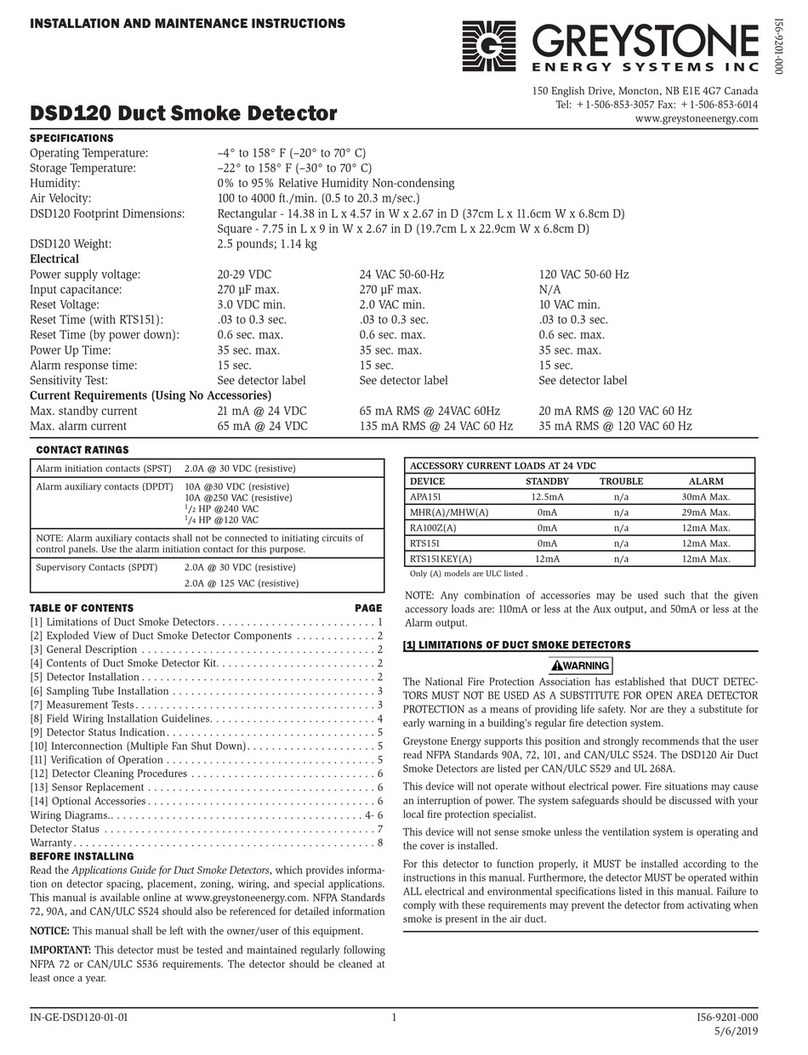3
Location of your Smoker
DO NOT use your smoker in garages, porches, sheds,
breezeways, or other enclosed areas. Your smoker is to
be used OUTDOORS only. DO NOT use this smoker in a
manner other than its intended purpose. It is NOT intended
for commercial use. The smoker is not intended to be
installed in or on recreational vehicles and/or boats. The
smoker is not to be used as a heater. DO NOT operate the
smoker near or under flammable or combustible materials
such as decks, porches, or carports. A minimum clearance
of 900mm is recommended. DO NOT operate the smoker
under overhead construction. Do not obstruct the ow of
combustion and ventilation air around the smoker housing.
For your safety:
• Do not store or use petrol or other ammable
liquids in the vicinity of this or any other
appliance.
• Do not store empty or full spare gas cylinders
under or near this or any other appliance.
• Keep the gas hose away from hot surfaces. Avoid
unnecessary twisting of hose. Visually inspect the
hose prior to each use for cracks, excessive wear
or other damage. Replace the hose if necessary.
• Never test for gas leaks with a lit match or open
ame. Never light smoker with door closed or
before checking to ensure the burner tube is fully
seated over gas valve orice.
• Never lean over smoker when lighting.
• Never alter or modify the regulator or gas supply
assembly.
• This smoker must not be used indoors.
• Only use in well ventilated areas.
• CARBON MONOXIDE HAZARD - USING THIS
APPLIANCE IN AN ENCLOSED SPACE MAY CAUSE
DEATH. DO NOT USE IN CARAVANS, TENTS,
MARINE CRAFT, CARS, MOBILE HOMES OR
SIMILAR LOCATIONS.
• This appliance shall only be used in an above
ground open-air situation with natural
ventilation, without stagnant areas, where gas
leakage and products of combustion are rapidly
dispersed by wind and natural convection.
Protect Children
Keep children away from smoker during use and until
smoker has cooled after you have nished. Do not allow
children to operate smoker.
Always ensure that no sporting or physical activities are
carried out in close proximity to the smoker during use and
while still hot.
Check Smoker for any Damage
Contact your retailer for assistance regarding replacement
of any damaged or missing parts. Do not operate a
smoker that appears damaged. Smokers for use with gas
cylinders are labelled ‘LPG/ULPG’. Check labelling at the gas
connection on your smoker.
Operate the smoker only on a stable, level,
non-flammable surface such as asphalt, concrete
or solid ground. DO NOT operate the smoker on
flammable material such as carpet or a wood deck.
DO NOT move the smoker while it is in use. Allow
the smoker to cool completely before moving or
storing.
GENERAL INFORMATION
• Use caution when assembling and operating the
smoker to avoid cuts and scrapes from rough or
sharp edges.
• Use caution when lifting and moving the smoker
to avoid strains or back injury. Two people are
recommended to lift or move the smoker.
DO NOT move the smoker while it is in use.
• DO NOT leave the smoker unattended while in
use. Operate the smoker with close supervision.
• DO NOT leave hot ashes unattended until the
smoker cools completely.
• This smoker becomes extremely hot - allow the
smoker to cool completely before handling.
If you must handle the smoker while it is hot,
ALWAYS wear protective oven mitts or heat
resistant gloves when handling the smoker or its
components.
• The water/wood chip tray should not be moved
while the smoker is operating or until the
smoker has cooled sufficiently. This contains hot
ashes and liquids that may cause serious injury.
If you must move these components,
ALWAYS wear protective oven mitts or heat
resistant gloves.
• Dispose of cold ashes by wrapping them in
heavy duty aluminum foil and putting them in a
non combustible container. Be sure there are no
other combustible materials in or near the
container.
• If you must dispose of the ashes in less time
than it takes for them to completely cool,
remove the ashes from the smoker, keeping
them in heavy duty foil, and soak them
completely with water before disposing of them
in a non combustible container.
• Use caution when opening the door of the
smoker while in operation. Keep hands, face,
and body safe from hot steam or flare-ups.
Protect your nose and mouth from smoke
inhalation.






























